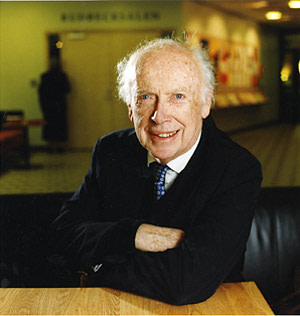Science: Can we extend healthy life?

Simply sign up to the Life & Arts myFT Digest -- delivered directly to your inbox.
Craig Venter, who became a scientific celebrity by sequencing the human genome in the 1990s and then moved on to microbial synthesis, is returning to human genomics on a grand scale.
He has set up a company in San Diego called Human Longevity Inc or HLI, which “will build the largest human [DNA] sequencing operation in the world”. As the name suggests, HLI aims to discover how we age in order to improve health as the process takes hold. “Our aim is not necessarily lengthening life but extending a healthier, high-performing, more productive lifespan,” Venter says.
The DNA reading technology comes from Illumina, the genetic instrumentation maker, whose latest HiSeq X Ten machines can sequence tens of thousands of human genomes a year, each containing three billion letters of genetic code. Illumina has joined a group of wealthy private investors in putting up $70m to fund HLI for its first 18 months.
“This is the company I wanted to have 13 years ago but the technology was not available then,” says Venter. “Now, at last, it is here. It is the moment I have been waiting for.”
Thirteen years ago Venter’s original company Celera had raced the public Human Genome Project to an official dead heat in the competition to read the full human complement of DNA. But Venter knew that the computing and DNA sequencing power available then was not sufficient to relate genetic variation to human health, disease and the ageing process. “I was the first person to have his genome sequenced, a process that took nine months and cost $100m, and the first to be frustrated by the inability to interpret it,” he says.
So, instead, Venter concentrated his considerable scientific and financial firepower on synthetic biology – rewriting the DNA of micro-organisms to make them more useful, for example, in biofuels production and even trying to create new forms of life.
Although his focus is switching back to human genomics, Venter says he will continue working on synthetic biology. Indeed, he sees scope for using synthetic biology in HLI’s research, rewriting genetic errors that creep into human stem cells as we age.
Stem cells will play an important role in HLI. Robert Hariri, a leading stem cell scientist, is a co-founder of HLI along with Venter and Peter Diamandis, who set up the XPrize Foundation. “We can derive stem cells from the body from the moment of conception to the moment of death,” says Hariri. “As we age, there is degradation and depletion of our regenerative stem cell populations – and we want to discover how the defects occur and how to correct them.”
Pause for thought
Increased volcanic activity, which cools the Earth, has partly offset the heating effect of greenhouse gases added to the atmosphere by human activity – contributing to the “pause” in global warming
The stem cell work, Venter says, illustrates that “sequencing a large number of human genomes is just the beginning of what we’ll do.” The company also plans to complement its human DNA data by sequencing the same people’s microbiome – the DNA of all the microbes that live in the human body, particularly the gut. The microbiome’s important role in health and disease has only recently been recognised. Another element in HLI’s programme is to profile the metabolome – all the biochemicals circulating in the body as a result of metabolism and other biological processes.
To make sense of these various components – human genomes, microbiomes, metabolomes, stem cell science and, of course, participants’ health records – will require data analysis on an epic scale. Venter believes his computers will be up to the task but he is not overconfident. “That’s not clear yet,” he admits. “A quantum computer would be ideal for this but we can’t wait for quantum computing to solve these problems.”
Other organisations in the public and private sectors in the US, Europe and China are embarking on similar projects to sequence 100,000 or more genomes and relate these to participants’ health records. But none has the depth and breadth of HLI, Venter maintains.
The most mysterious venture is Calico, which Google launched last September with an apparently similar mission to HLI, to extend healthy lifespan. Google has released few details about Calico and Venter still knows little about its activities.
“We are not in a competition with [Calico],” he says. “I turn 68 later this year and if they solve ageing before we do, I will kiss the rings and buy their products.”
——————————————-
When hadrons collide: Cern plans an upgrade
If you want to know what long-term planning means, look no further than high-energy physics. Cern’s $8bn Large Hadron Collider (LHC), the atom smasher where the Higgs particle was discovered in 2012, was designed in the 1980s when its predecessor, the Large Electron-Positron (LEP) collider, was still under construction.
Now, with the LHC shut down for a two-year upgrade that should enable it to operate at even higher energies for another two decades, physicists at Cern and elsewhere are engaged in a frenzy of planning for successor machines. Some of the candidate designs are round, some are straight and all would come with a multibillion-dollar price tag.
One might be chosen as a global project or there might be two or more complementary colliders. The location(s) could be at Cern again or a site in Japan or the US, depending on the sources of funding.
No decision on which design to approve and ask governments to pay for can be made until the LHC has produced more results but physicists want to be ready with a viable candidate when the time comes.
“We still know very little about the Higgs boson, and our search for dark matter and supersymmetry continues,” says Sergio Bertolucci, Cern’s research director. “The forthcoming results from the LHC will be crucial in showing us which research paths to follow in the future and what will be the most suitable type of accelerator to answer the new questions that will soon be asked.”
Frédérick Bordry, Cern’s director for accelerators and technology, adds: “We need to sow the seeds of tomorrow’s technologies today, so that we are ready to take decisions in a few years’ time.”
Map of circular collider
The Future Circular Collider will have a circumference of between 80km and 100km under the French-Swiss borderland
One exploratory study focuses on a circular collider in a tunnel with a circumference of between 80km and 100km under the French-Swiss borderland (see map). It would smash together hadrons (protons), like the LHC, but with energies in the region of 100 TeV. The LHC ring is just 27km in circumference and its collision energies will reach just 14 TeV. (TeV or teraelectron volts are energy units used in particle physics.)
This Future Circular Collider study will be a global venture for particle physics. It kicked off with an international meeting at the University of Geneva last month and will be conducted over five years. The circular collider study will run in parallel with another study that is already under way, the Compact Linear Collider or Clic, another option for a future accelerator at Cern or elsewhere. It would smash together electrons and their antiparticles (positrons) in a straight line tens of km long (for technical reasons it is easier to accelerate electrons in a straight line and protons in a ring).
Physicists are co-ordinating Clic planning with a similar design called the International Linear Collider or ILC, which is more likely to be built in Japan. Whether the US, once the undisputed home of high energy physics but now number two to Europe, will rediscover an appetite for funding big physics projects remains to be seen. As the cancellation of the partially completed US Superconducting Super Collider (SSC) in 1992 showed, physicists can come up with brilliant technical designs but the political future is hard to anticipate.
——————————————-
You’ve got to be fit to take on diabetes
Oxidising molecules built up a bad reputation in 20th-century medicine while their foes, antioxidants, came to be regarded as biochemical heroes. But that view is beginning to change, as clinical trials fail to demonstrate the expected benefits of antioxidant vitamins while theoretical biologists rethink the optimal balance between oxidation and its opposite, reduction, for good health.

Now James Watson, co-discoverer of the DNA double helix in 1953 and still a fertile scientific thinker at the age of 85, has spoken up for oxidants in a solo paper in The Lancet medical journal. He focuses on type 2 diabetes, one of the world’s fastest growing causes of ill health, but says his conclusions apply also to dementia, cardiovascular disease and some cancers.
“The prevalent view of type 2 diabetes is that an excess of intracellular oxidation causes inflammation, which in turn kills cells in pancreatic tissue,” he says. In fact, the real cause of the inflammation is a deficiency of biological oxidants.
According to Watson, an important clue comes from evidence that regular physical exercise can help to fend off incipient type 2 diabetes. Exercise produces “reactive oxygen species” such as hydrogen peroxide. A microscopic organ inside cells, called the endoplasmic reticulum, then uses their oxidising power to help forge chemical bonds – disulphide bonds – which stabilise newly synthesised protein molecules as they fold into their optimal 3D shape.
Insufficient oxidation in the endoplasmic reticulum results in misfolded proteins, leading to inflammation that damages the pancreas, says Watson. Recent studies have shown that taking antioxidant vitamins can counteract the benefits of exercise in promoting the efficient production and use of insulin.
“We sorely need to take a much more serious and thorough scientific look at the mechanisms through which exercise improves our health,” Watson says. He is planning a scientific meeting this year at Cold Spring Harbor Laboratory, where he works, which he hopes will launch a larger scientific effort. “Happily the first super-wealthy super-athlete that I have approached, Sir Richard Branson, has responded positively to my request to consider providing financial support,” he notes.
Watson concludes his Lancet paper on a personal note: “My capacity to remain a full-time scientist at the age of 85 years has probably been much aided by regular exercise (singles tennis).” His mental activity and genetic inheritance may have helped even more, he writes: “Efforts to tease out the relative importance of these different factors cannot come too soon.”
To comment on this article please post below, or email magazineletters@ft.com
Comments